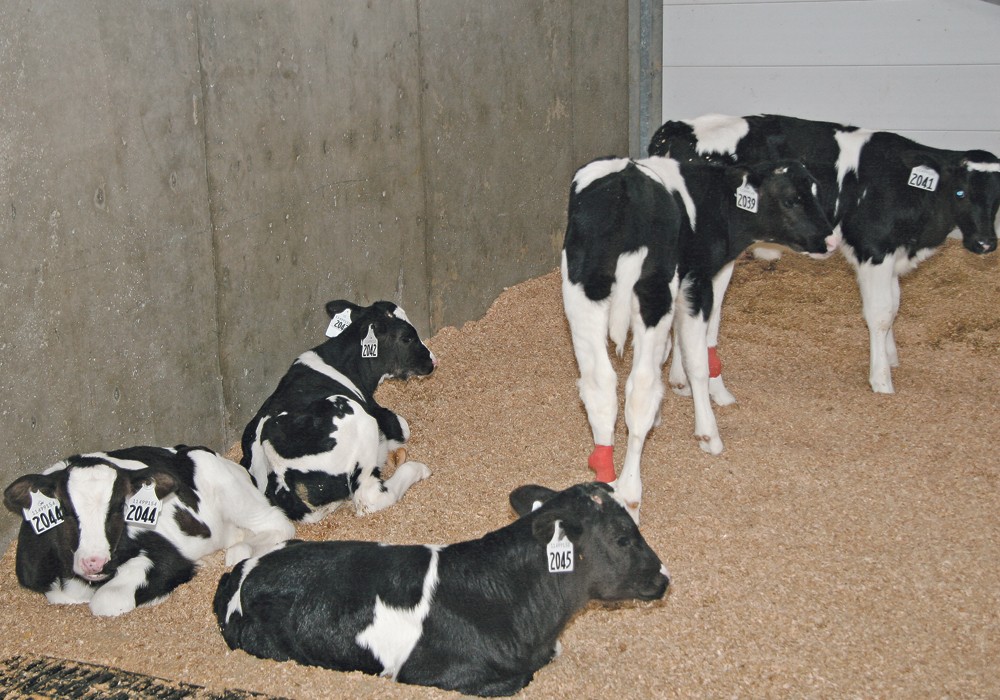
Calves are often shipped before they are eight days old, contrary to new Canadian Food Inspection Agency requirements, and time in transit sometimes exceeds the new rules mandating that young calves go no longer than 12 hours without feed, water and rest.
Without changes in infrastructure and handling, there might be more on-farm killing of healthy calves if producers don’t have the facilities to house and feed them or if available markets are more than a 12-hour drive distant, it warned.
The study, led by University of British Columbia animal welfare professor David Fraser, was prepared for the National Farmed Animal Health and Welfare Council and presented to that group Nov. 27.
“We went from west to east, looking at how marketing happens for male dairy calves in Canada, and found a huge variation in how things are done,” said Fraser.
Most male dairy calves are shipped before they are a week old, sometimes to other farms or through auction marts or assembly yards. Many are destined for veal production operations, particularly in Ontario and Quebec, which have about 97 percent of Canada’s veal production.
Under the new livestock transportation rules, “all calves too young to be fed exclusively on hay or grain would be limited to 12 hours total journey from the dairy to their destination and this is very different from current practice,” said Fraser.
He noted a working group involving the CFIA and dairy personnel was already in place to address some of the issues itemized.
The group that undertook the study comprised dairy and veal producers, veterinarians, auction market personnel and provincial and federal regulatory staff.
“The feeling was that positive changes could be made to implement the new regulations but without changes in infrastructure and skills, we might see some negative outcomes,” said Fraser.
“First of all, more on-farm killing of healthy calves from farms that are simply more than 12 hours away from a facility that can raise them. This would require at the very least good training and equipment to perform on-farm euthanasia, although we felt it would be resisted by both dairy farmers and the public.”
Fraser said research showed calves of no commercial value, those born sick, weak or otherwise compromised, are often shipped to auction markets.
“In British Columbia, our sample indicates about 10 percent sell for $10 or less. Around two percent don’t sell at all. The problem is likely that some farmers are not willing or trained or equipped for euthanasia and we noted positive steps that are being made for appropriate use of euthanasia in the dairy sector.”
Also noted was “huge variability” in dairy farm practices before male calves are shipped, including whether adequate colostrum and other nutrition is provided. That leads to a wide variation in the condition of calves sold.
Available pen space, facility design and staffing may not be adequate to care for young male calves beyond a few days, so in many cases they are shipped as soon as possible, the study said.
It also indicated producers who pre-condition male dairy calves, which includes vaccination and weaning, can sell the animals for premium prices.
“One estimate was that possibly 15 percent of male dairy calves in Ontario might be in this pre-conditioned calf category,” Fraser reported.
Another way to increase male calves’ value and thus their welfare is to introduce beef semen in breeding. That might improve prices, providing an incentive for producers to invest in better facilities and management.
The report noted age of the calves is often used as a proxy for transport fitness. In New Zealand, for example, they can be shipped after four days of age, while Europe prohibits shipping until 14 days of age.
“We noted that calf health can decline on dairy farms if the housing and management are poor, if they haven’t been fed colostrum well, if they’re not receiving adequate nutrition, if the air quality is such that it’s causing respiratory disease, if herd health is poor and they’re being continually exposed to pathogens. Hence age is no guarantee of fitness for travel,” said Fraser.
Also noted was huge variation in the use of antimicrobials to protect calf health before marketing. That includes the use of Class 1 antimicrobials, those important to human health, and the industry is trying to curtail use.
However, eliminating the use of these entirely could adversely affect calf welfare, the report said, so reduction and judicious use are recommended.
The national code of practice for the care and handling of dairy cattle, now being updated, requires that calves receive adequate colostrum before being transported and recommends that unweaned calves be given at least half of that day’s ration of milk before transport.
The veal code of practice also provides transport cautions.
“Neonatal calves are not able to cope well with transport, especially long journeys or journeys involving intermediate stops. They can be weak, have difficulty walking, are susceptible to extremes of cold and heat, and are vulnerable to disease. Young calves also have modest energy reserves, and the time of their last feeding must be considered when arranging transport,” it reads.
The report to the NFAHWC recommended careful consideration of calves’ fitness for transport and said a system of benchmarking, so producers could compare themselves to best practices and improve if necessary, could be effective.
However, the implementation of new regulations raised concerns for male dairy calf welfare overall.
“This is not one of those cases where … a large fraction, large percentage of current transport already fits the new regulations,” said Fraser. “In this case a large percentage of current practices do not fit the new regulations.”























